BMSB 2018 Probes Content Delivery Technology And Strategies
VALENCIA, SPAIN—Some of the world’s best and brightest minds in the fields of television and wireless broadband gathered at the 13th annual IEEE International Symposium on Broadband Multimedia Systems and Broadcasting (BMSM).
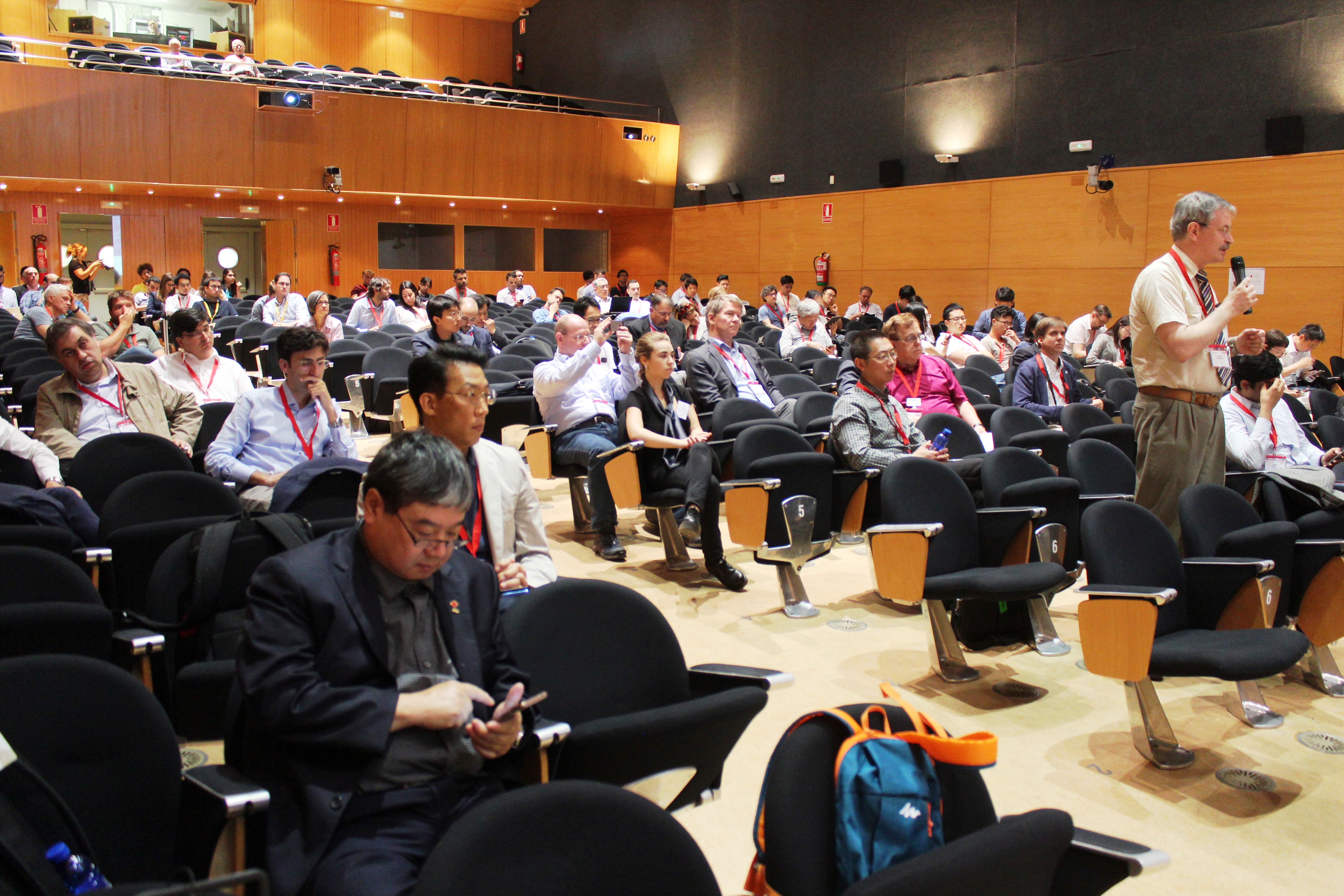
More than 160 individuals representing broadcasting, academia, scientific research organizations, and the equipment manufacturing sector worldwide attended the June 6-9 conference, hosted by Valencia’s Polytechnic University (Universitat Politècnica de València), and organized by the Institute of Telecommunications and Multimedia Applications group at that institution.
Topics covered edge-to-cloud virtualization, 4K video quality assessment and comparison to HD imaging, “multisensorial TV”, advanced compression technologies, multimedia processing and broadband connectivity in autonomous vehicles, the creation and use of non-uniform constellations in broadcast and multicast applications, satellite transmission, spectrum sharing, and much more.
TELEVISION OF THE FUTURE
In the Tuesday morning keynote. “Transcending the Limits of Broadcasting—Holistic Services by Transparent Delivery,” Roland Beutler, distribution strategy manager at Germany’s Südwestrundfunk, examined new content delivery modalities, and what will have to be done to make them work. “Broadcasters are asking people what they like and building on that,” said Beutler, observing that this is just starting to happen. “It’s still at the beginning; not yet final.”
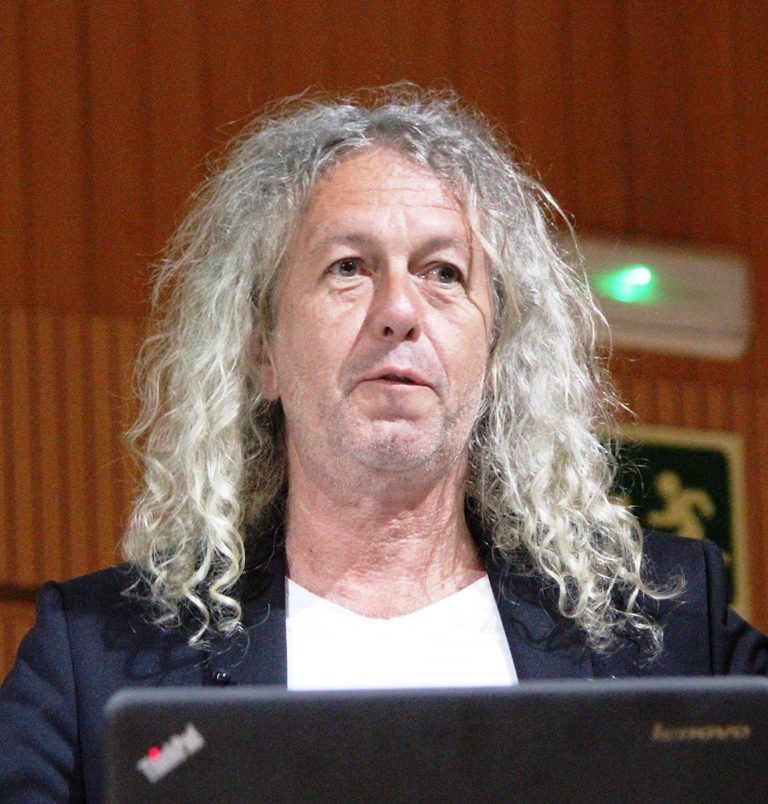
He viewed the television broadcast platform of the future as one that would be all about personalized viewing, “tailored to an individual’s tastes and wants,” and “all keyed to your preferences; you set it up [to reflect these].”
Beutler predicted that the use of autonomous transportation will drive an increasing amount of video consumption outside of the home. “All this is to be provided for the car of the future—an autonomous vehicle [with] automated driving,”
Get the TV Tech Newsletter
The professional video industry's #1 source for news, trends and product and tech information. Sign up below.
In addition to being fully personalized and consumed in non-conventional environments, Beutler prophesized that television would move to a fully integrated platform with service available everyway for any type of viewing device; that networks supporting this service would be fully transparent to the user, with devices intelligent enough to locate available distribution services and automatically connect to them, and also the existence of a means for viewers to connect with content originators and distributors.
“You need to have a return channel by all means,” said Beutler. “Users have to have a way to provide feedback to the broadcasters.”
5G: A GROWING PRESENCE
Beutler’s keynote set the stage for the prevailing theme at this year’s BMSB conference—the emergence of 5G wireless broadband connectivity, which promises much greater bandwidth and speed than is available with today’s wireless infrastructure, as well as the ability to simultaneously serve many more consumer devices within a given cell service area (as many as one million devices within a one square kilometer space) than is possible now with existing wireless broadband technology). It is seen by some as a technology that could rival conventional terrestrial broadcasting.
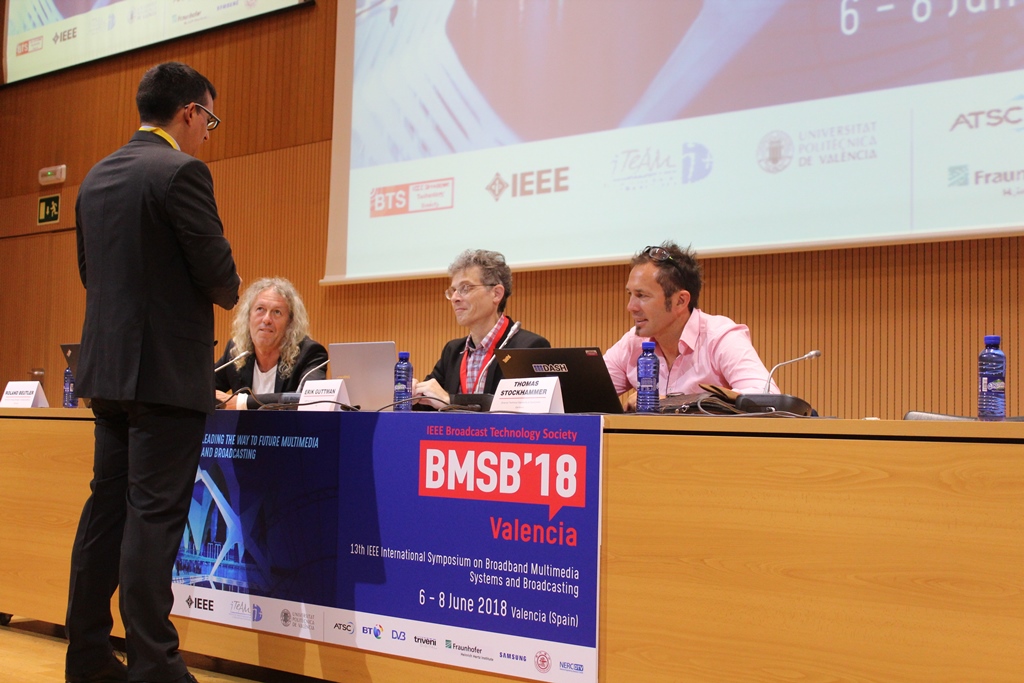
“5G will turn over everything in society,” he said. “It’s not just another round of mobile networks; it’s a new telecommunication infrastructure.”
Beutler observed that 5G is supposed to be ubiquitous, addressing requirements in such areas as smart power grids, e-health, smart cars, connected homes, as well as entertainment. But he warned that deployment will take time.
“Politicians are all keen to making 5G a success,” said Beutler, “but I think it’s going to take years [to implement].”
A large number of presentations based around 5G at this year’s conference prompted some attendees to refer to this year’s BMSB as the “year of 5G.”
Topics included 5G for broadcast, optical communications, cloud applications, media delivery in 5G, system architecture for live immersive 3D-media transcoding over 5G networks, and many more. There was even an all-day pre-conference tutorial session offered on 5G-Xcast (an offshoot of the 5G infrastructure Public Private Partnership (5G-PPP) that was established to implement the multicast/broadcast point-to-multipoint element in 5G networks).
Another recurring topic was the increasing scarcity of radio frequency spectrum, which was addressed in several of the 5G presentations including the use of 3.4-3.8 GHz spectrum, as well as 6 GHz and even higher frequencies. And considerable interest is being expressed in moving into higher (e.g, optical)—with nine of the presentations addressing technologies for enabling and using spectrum in the visible light region.
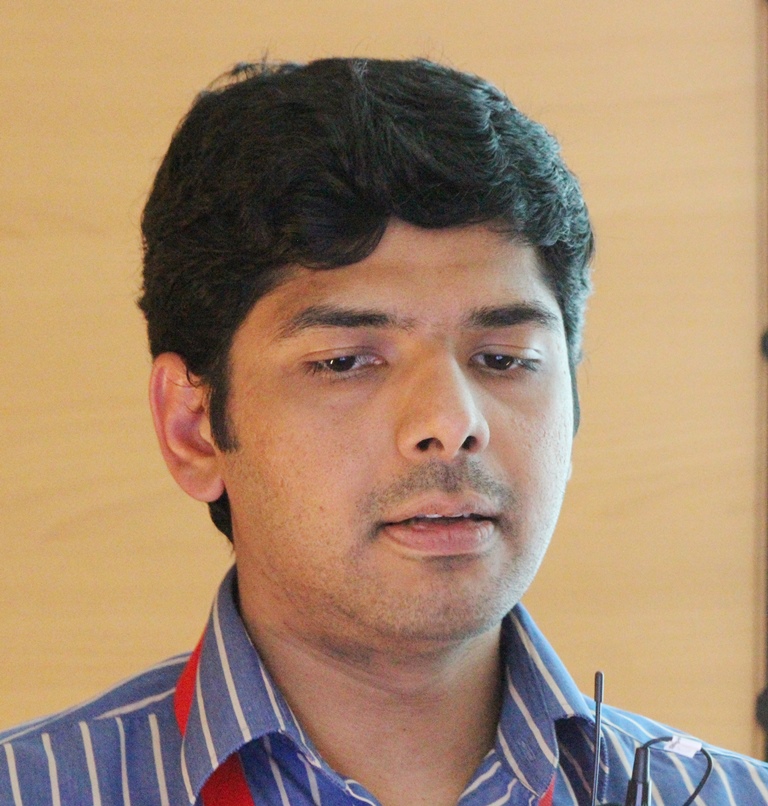
Athul Prasad, head of Nokia’s 5G business modeling and analysis, offered another solution for spectrum scarcity in his presentation “Enhancements for Enabling Point-to-Multipoint Communication Using Unlicensed Spectrum.”
“We need to explore this [option], as data rates are growing exponentially and spectral resources are limited and expensive,” said Prasad. “We need to investigate utilization of such unlicensed spectrum for competitive technology enablers for 5G deployment, as the bandwidth needed within licensed spectrum is not available.”
He discussed research into this area with 5G-Xcast and other deployments and observed that while interference from other unlicensed users could be a limiting factor in tapping this resource, there was a possible solution.
“We did performance evaluations and found that significant interference reduction was possible through the use of SFNs [single frequency networks],” he said, noting that with SFN technology “significant throughput enhancements and interference reduction in an interference-limited environment” was possible.
“However, latency-critical services would need to be handled conventionally, as this would degrade QoE [quality of experience] in applications such as virtual reality,” Prasad added.
COMPETITOR OR COMPLEMENTARY?
With the large amount of emphasis at this year’s BMSB conference centering on 5G wireless broadband and its promised high data transmission speeds and ability to simultaneously connect with large numbers, it’s only natural to wonder if this emerging technology could impact negatively on traditional over-the-air broadcasting. Conference participants representing several disciplines were polled for their opinions, and here are the results.
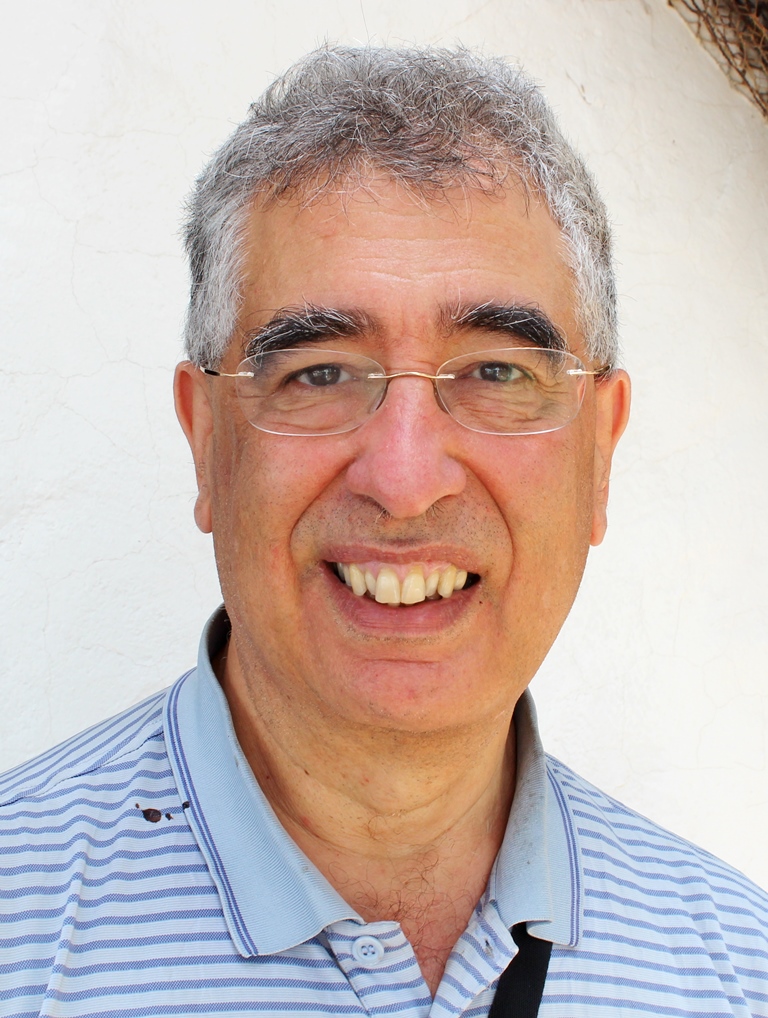
John Cosmas, a professor of electrical engineering at London’s Brunel University characterized 5G as complementary and said broadcasters could “perhaps benefit from it.”
“The best thing to do is to learn as much as possible about it,” Cosmas added. “It’s worthwhile to understand exactly what 5G is and to see what it can provide. People are still watching television, but on-line access [for consumption of content] is growing.”
Lachlan Michael, a broadcast and communications engineer for a large Japanese electronics firm, noted the conference theme of 5G is a big break from past conferences that focused more on traditional broadcasting.
“I think we’re definitely moving into the area of ‘how does broadcasting cope with the age of 5G?’” Michael mused. “And there have been many solutions discussed at this conference. It’s been an eye-opener for me.
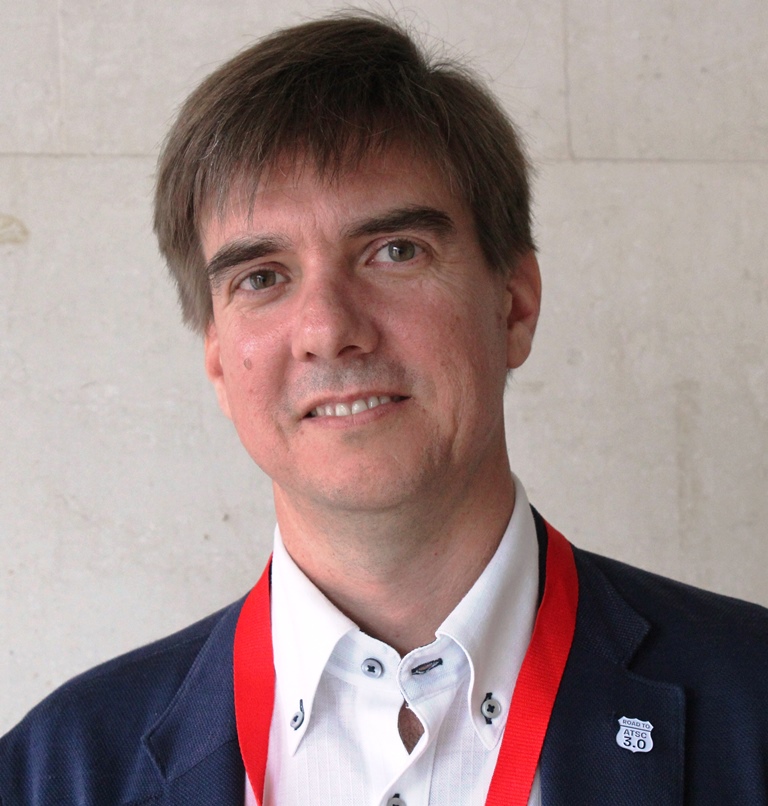
“Previously I had thought that 5G might be the final frontier for broadcasting, but actually[in] listening to many of the presentations and [in] talking with the people here, I’ve come to change my position a little bit,” he added. “I think that while 5G will be important there’s certainly going to be a role for traditional broadcasting technologies to continue, and I think that while 5G is one area that we’re going to go into, it’s not the only area, and I don’t think it will be the end of traditional terrestrial, satellite, or cable. There’s a bright future for broadcasting.”
Yiyan Wu, a research scientist with the Communications Research Centre Canada, also doesn’t see 5G as a threat. [Broadcasters] are content providers,” he said. “Terrestrial distribution is one of their distribution means. They’re on the internet. They’re on terrestrial. They’re on cable. They are on the satellite.
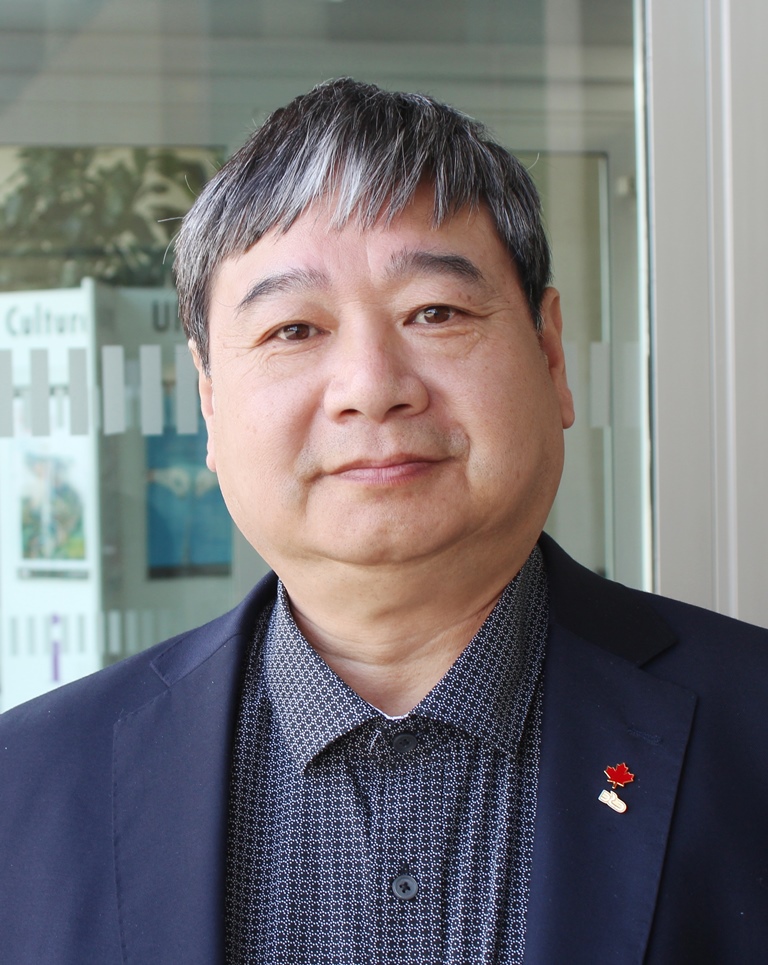
“Over the last 20 or 30 years there’s been many more distribution mechanism and technologies [and outlets for broadcasters],” Wu continued. “We have cable, satellite, Internet. 5G is just wireless internet. I think we all agree, the future is IT and 5G is another means to distribute a broadcast signal. To totally replace terrestrial broadcasting—that’s a regulation issue; not a technical issue.”
WORLD’S NEWEST DTV TRANSMISSION STANDARD FEATURED
As ubiquitous as 5G seemed to be at the conference, the newest delivery tool for television—ATSC 3.0—was not exactly a shrinking violet, with more than 20 presentations addressing the transmission technology either directly or indirectly.
In addition to deep dives into the standard’s inner workings in such offerings as “Detection Performance of Transmitter Identification for ATSC 3,” “Laboratory Test Analysis of TxID Impact into ATSC 3.0 Preamble,” and “Performance Evaluation of ATSC 3.0 DASH over LTE eMBMS,” in a Friday morning address, Richard Chernock, Triveni Digital’s chief science officer, and immediate past chair of the ATSC technology group, provided an overview of ATSC 3.0 in terms of what has been achieved so far, the new services and business opportunities it affords broadcasters and viewers alike, and a look at what it will take for deployment of the standard.
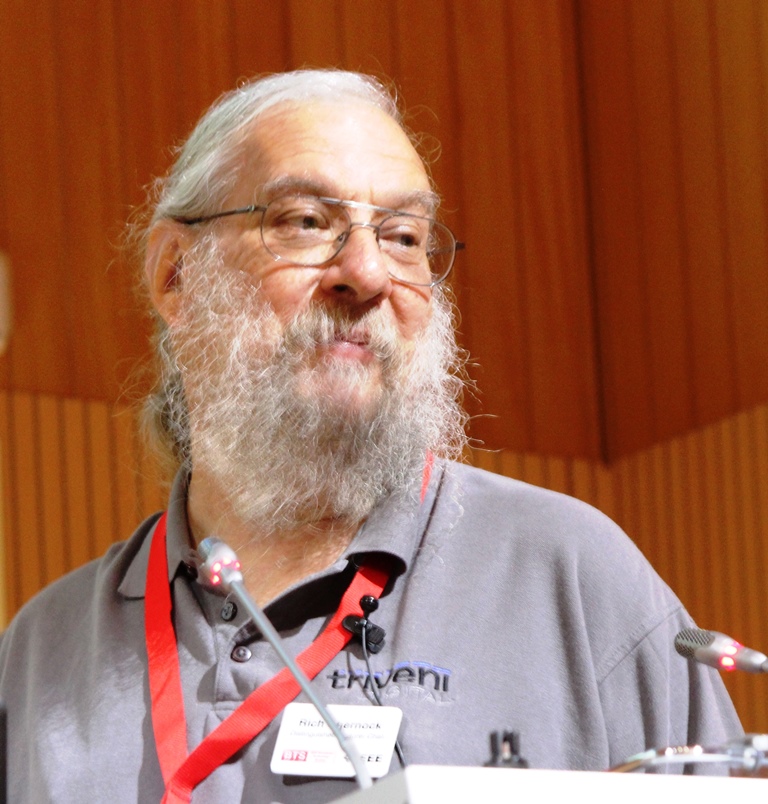
In his address, Chernock acknowledged the finalization of the standard earlier this year, but also commented there was still more work to be done. “I’m not going to call it done, because it’s going to continually evolve,” he said.
Chernock reflected on the capabilities that ATSC 3.0 brings to broadcasters, including ultra high-definition, high dynamic range, extended color gamut, higher frame rates, and immersive audio, but especially called attention to its hybrid over-the-air/Internet delivery attribute.
“Broadcasting is no longer an independent silo,” said Chernock. “It’s [now] not something [in addition to] the internet, but something that’s part of the internet… and with this come new business models. With the use of segmented delivery that the internet provides, localized ad insertion now becomes easy. It used to be very difficult.”
He concluded: “As we look to the future, we will find that the old paradigm of slowly changing technologies is probably over. Standards and technologies for broadcast television will need to become more nimble and adaptable—more like those for the Internet.”
This year’s BMSB event featured more than 120 presentations involving the latest developments in the fields of television, wireless broadband and allied technologies. The 2019 BMSB conference will take place June 5-7 on JeJu Island, Korea.
James E. O’Neal has more than 50 years of experience in the broadcast arena, serving for nearly 37 years as a television broadcast engineer and, following his retirement from that field in 2005, moving into journalism as technology editor for TV Technology for almost the next decade. He continues to provide content for this publication, as well as sister publication Radio World, and others. He authored the chapter on HF shortwave radio for the 11th Edition of the NAB Engineering Handbook, and serves as editor-in-chief of the IEEE’s Broadcast Technology publication, and as associate editor of the SMPTE Motion Imaging Journal. He is a SMPTE Life Fellow, and a Life Member of the IEEE and the SBE.

